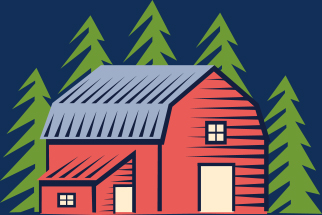Make Your Own Raised Garden Beds
Posted By Cathy Scholes On 13-08-2018
There are many reasons to opt for raised garden beds in addition to, or in place of regular gardening. Raised garden beds are beautiful centerpieces of a garden, or they can substitute for the garden itself if you don’t have much space.
Raised garden beds allow you to control the soil environment for your plants. In-ground gardens are prone to soil that is too dry or too moist. Raised garden beds, if made from rich loam, stay rich and fertile. You can control the health of your garden’s soil, benefiting the health of your plants.
Additional benefits of raised garden beds include:
- It’s easier on your back to tend to a garden that is slightly raised. You’ll bend and strain less.
- Soil drainage is better with raised beds. Loose and crumbly are characteristics that mean soil is better drained
- Your growing season is extended. A smaller lot of soil heats up quicker, so it’ll be ready earlier in the spring to start planting.
- You won’t accidentally step on your plants while in the midst of your garden weeding and tidying up.
- You can plant a greater density of plants in raised lots, as no space between rows is required.
If you’re good with your hands, then you may want to make make this your next DIY project. It’s pretty simple, and even those with no experience in DIY or woodwork can do it. You’ll need to following materials:
- 1×4 inch cedar board, 10 ft
- 1×4 inch cedar board, 6 ft
- 1×4 inch cedar board, 8 ft
- 1/4×1 inch cedar slat, 4 ft
- 2-inch corrugated galvanized metal roofing material, 2×8 foot sheet
- Offset metal snips
- Wood stain
- 3-inch paintbrush
- 8 corner brackets
- Box of 50 self-piercing hex screws with neoprene washers, 10×1 incb
- ¼ inch magnetic hex screwdriver or drill bit
Steps:
- Cut your wood, either at your local lumber store or by yourself. The 10-foot is cut in half to create two long top pieces. The 8-foot board is cut into 8 one-foot lengths to create the leg pieces. The four-foot is cut into four one-foot slats to create inside support pieces.
- Cut the metal sheet. First cut in half lengthwise, creating two 1×8 foot pieces. Cut both panels at three feet. These pieces will become the ends of the raised beds. Two 1×5 pieces will remain. These will be the sides.
- Stain the outside of the boards. This will give your raised garden beds a more thoughtful, professionally done look.
- Connect the four top brackets. Form them into a square and attach them using the corner brackets and two screws on each board end. Your frame will now be assembled. Its dimensions are 3×5.
- Now construct the leg pieces. Connect two 1-foot pieces with corner brackets with two screws per board. These will support the frame and elevate the bed.
- Add the metal sides. Put the legs at either end of the frame and position the siding. Screw along the inside of the frame to connect each section. Make sure the cut portion of the metal points towards the ground. Do this for all four sides.
Now the raised garden bed frame is complete. To get growing with it, prepare the spot where you’ll place it:
- Plot the site, ensuring it’s at least the dimensions of your garden bed frame
- Remove the turf and weeds from the top of the site
- Dig vertical lines around where your garden bed will be placed. This allows the bed to sink into the ground, giving it more stability and lessen the “bathtub effect” raised gardens can have.
- Put down a layer of weed suppressing landscape fabric over the site
- Place your garden bed on top, pressing it down slightly to settle into the vertical lines
From there, you’re free to fill your garden bed with soil and begin planting. A good soil ratio is half topsoil and half compost. You don’t have to worry about planting individual plants too close together. Plants compete for sunlight and nutrients and automatically adjust themselves relative to their neighbours.
If you’re looking to grow vegetables in your raised bed, there are some varieties that do better than others. Vegetables that grow well in raised garden beds are root veggies, leafy greens, onions, tomatoes, and potatoes.
Raised garden beds are an absolutely stunning addition to your outdoor space, whether you’re working with a large yard or a little patch of ground. Being able to control the soil and reap a longer growing season will give highly satisfying results. It’s easy to create your own garden beds and gives you the skills to take forward in your gardening.
If you’d like any help with your raised garden beds, call your local experts at In The Backyard, located in Hamilton, Ontario. We do indoor and outdoor renovations, custom woodworking, and backyard shed solutions. Call us at 1-844-212-1284, or contact us here.
 0 Comment
0 Comment

